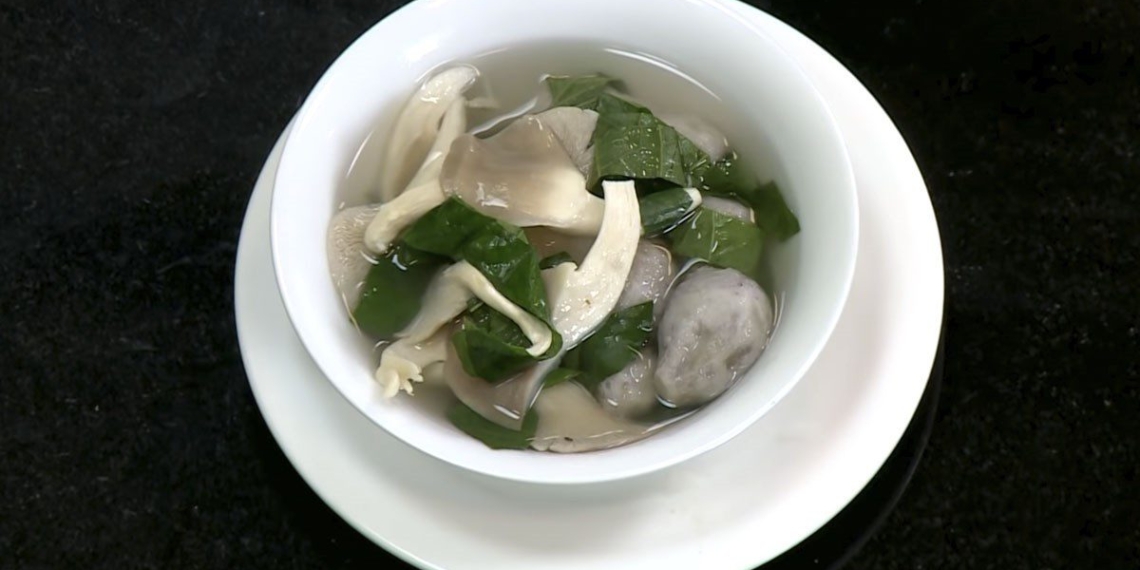Taro is one of the most common ingredients in Vietnamese dishes. Besides the usual savory dishes, when used to prepare vegetarian dishes, taro also becomes delicious and attractive. Let’s join TasteVN in the kitchen to immediately make 3 ways to cook simple and delicious vegetarian taro soup!
1. Vegetarian Taro Soup with Betel Leaves
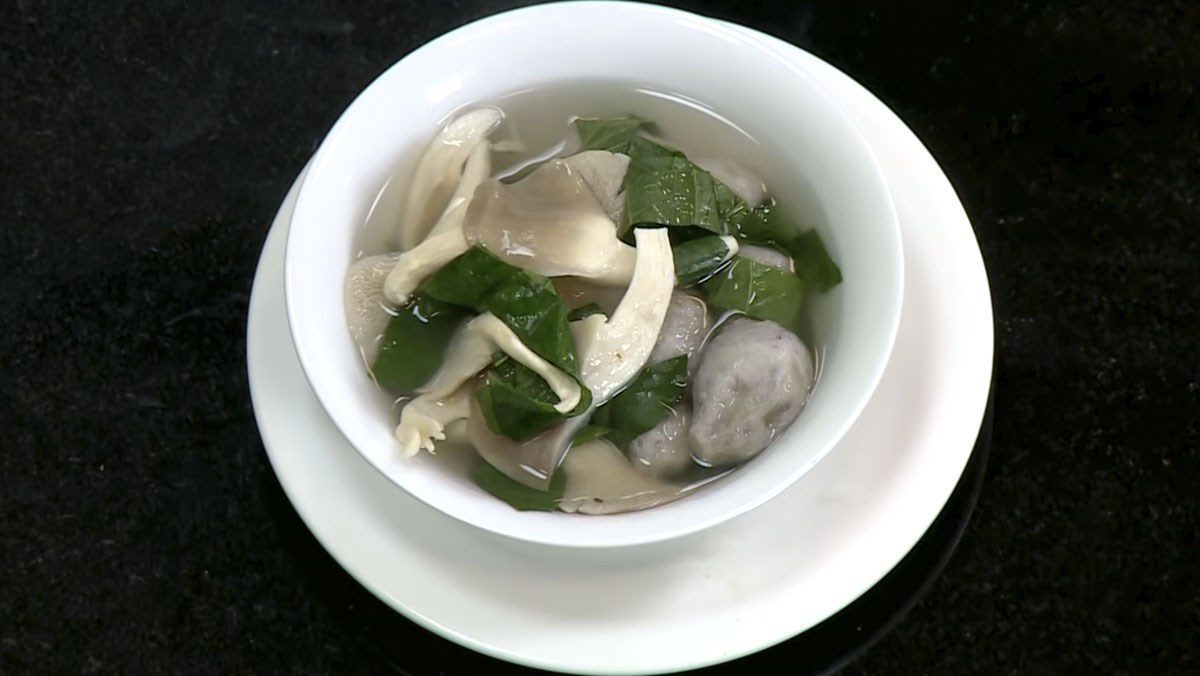
-
Preparation time
40 minutes
-
Difficulty level
Easy
Ingredients for Vegetarian Taro Soup with Betel Leaves Serves 4
Taro 300 gr Shiitake mushrooms 150 gr Betel leaves 100 gr (about 10 – 15 leaves) Vegetarian seasoning 1 tablespoon Sugar 1/2 tablespoon Vegetarian fish sauce 1 tablespoon Salt A little Pepper A little
Ingredient image
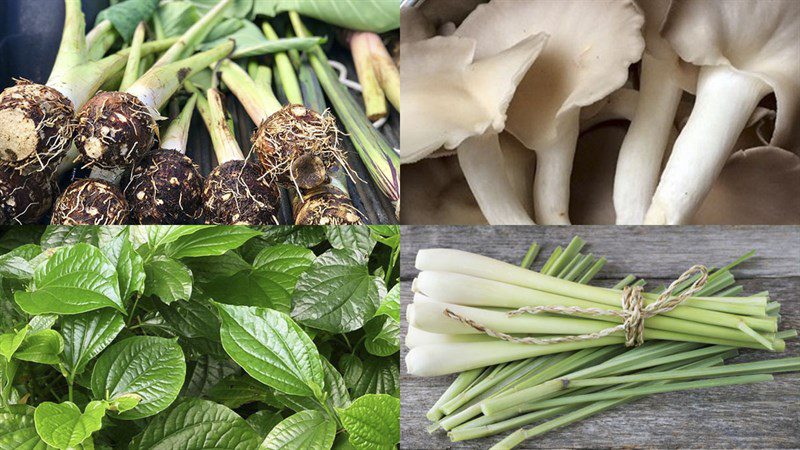
How to make Vegetarian Taro Soup with Betel Leaves
-
Prepare the ingredients
To remove dirt, wash the taro several times with water.
Put a pot of water on the stove and bring to a boil, then blanch the taro for about 5 minutes, then remove it, let it cool, and peel it. For larger taro roots, after peeling, cut them into bite-sized pieces. If they are small, leave them whole.
Tip: Boiling the taro before cooking helps reduce its itchiness and shortens the cooking time.
To remove dirt and oyster mushrooms when purchasing, you cut off the mushroom stems, then soak them in water mixed with a little salt, rinse thoroughly with water, and let them drain.
Wash the betel leaves, let them drain, then roll them up and use scissors to cut them into pieces about the thickness of one finger. Clean the lemongrass, then smash it.
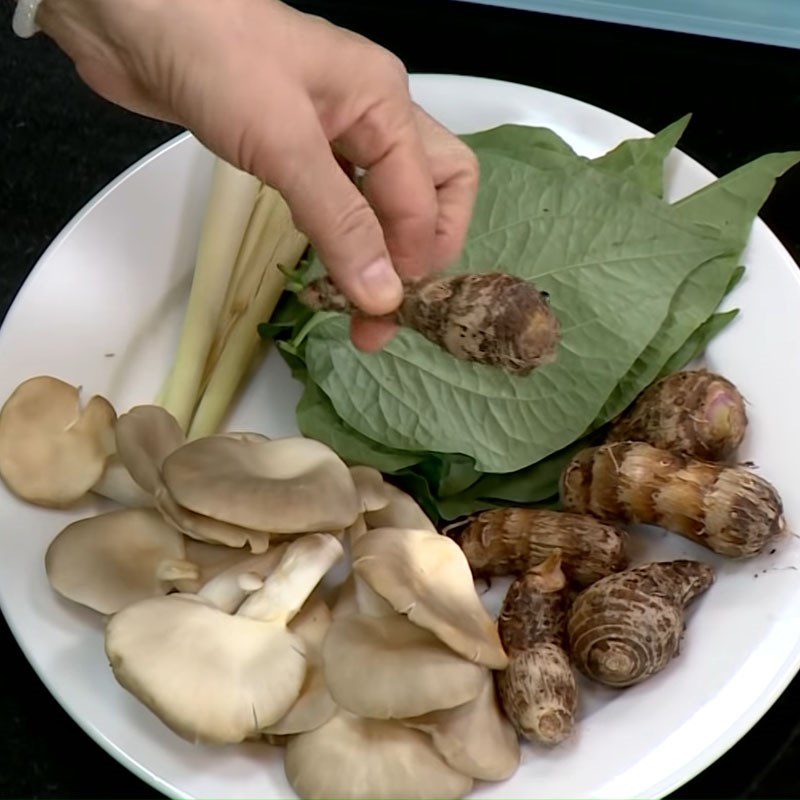
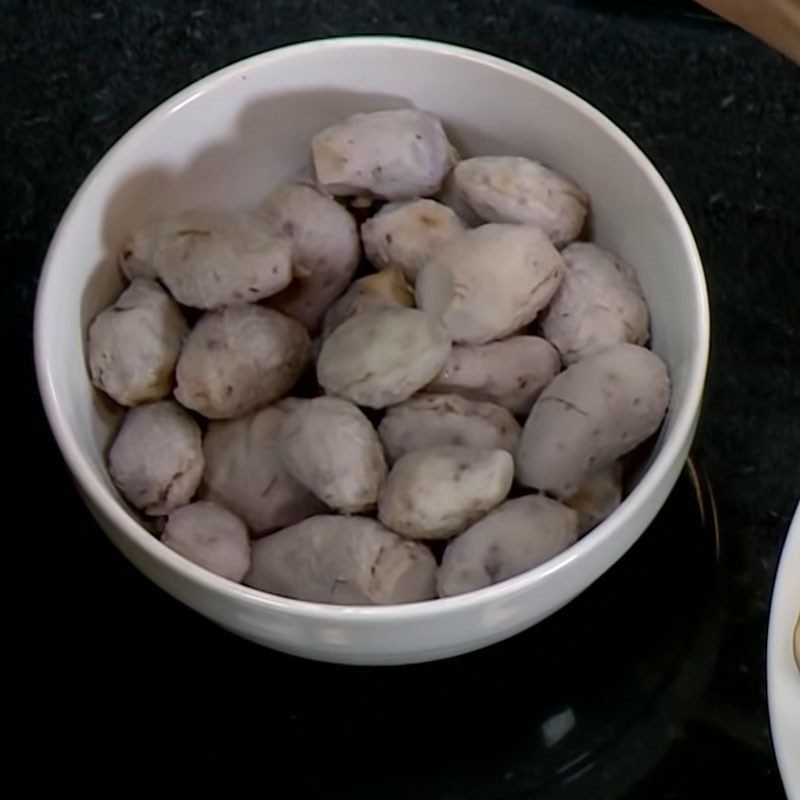
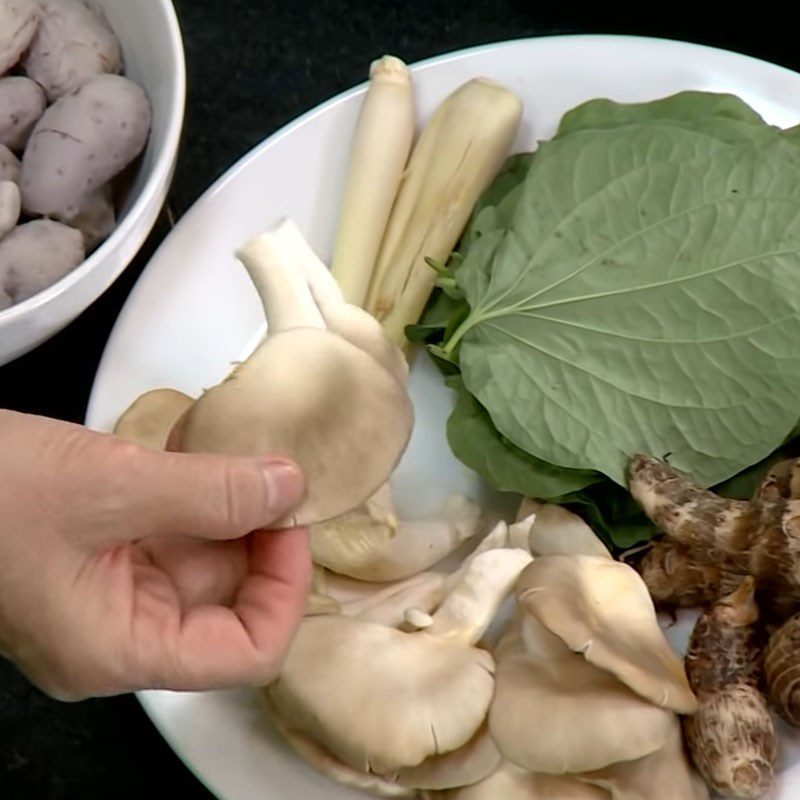
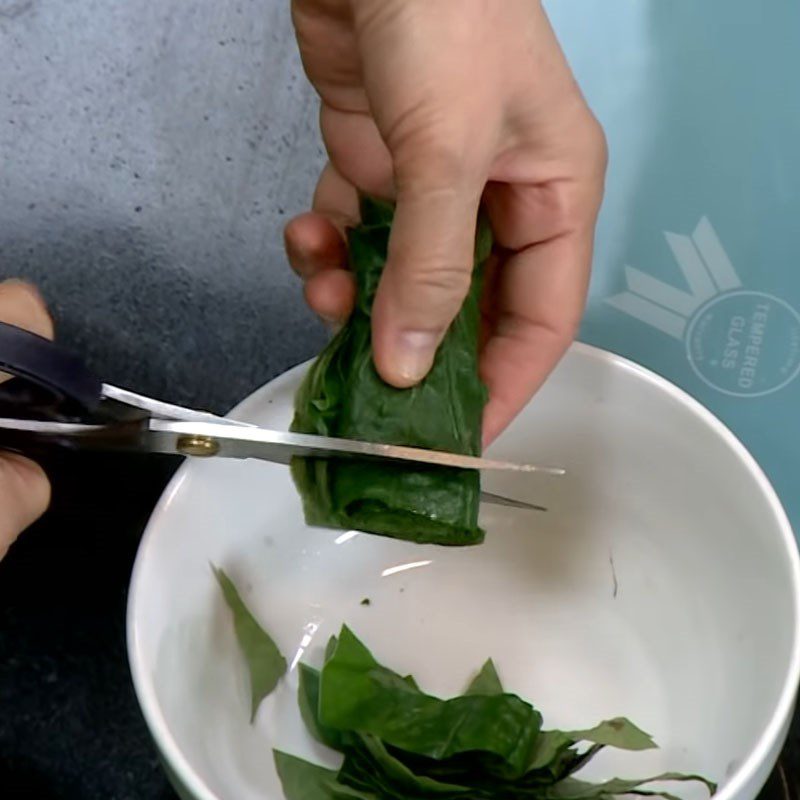
-
Cooking oyster mushrooms
Place a pot on the stove, add 2 liters of water, 1 tablespoon of vegetarian seasoning, 1/2 tablespoon of sugar, 1 tablespoon of vegetarian fish sauce, then stir well and boil on high heat.
When the water starts to boil, tear the oyster mushrooms into small pieces with your hands and add them to the pot, stir well, and continue cooking until the mushrooms are soft and the broth boils again.
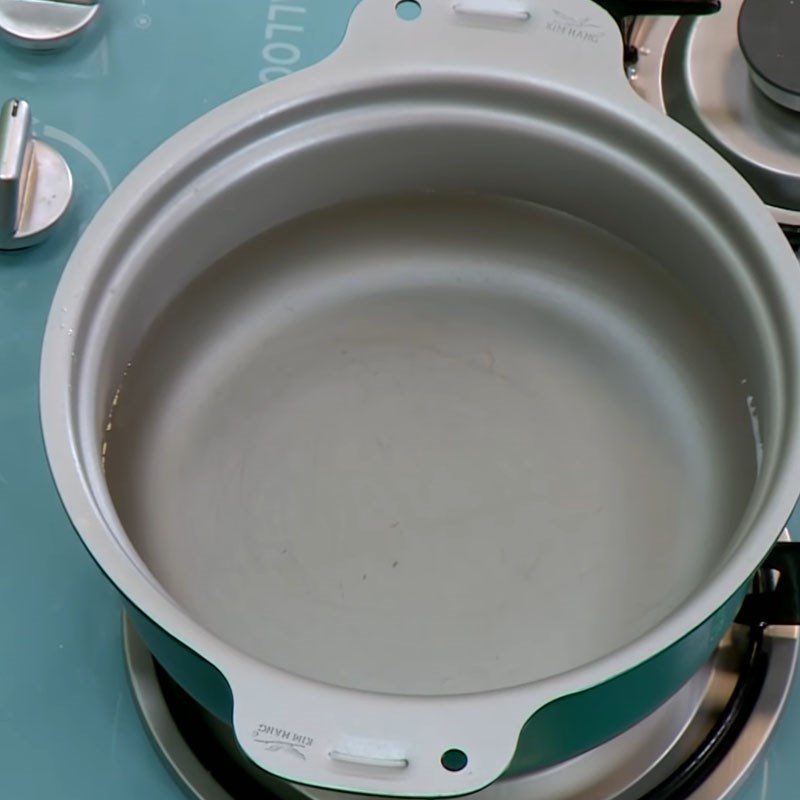
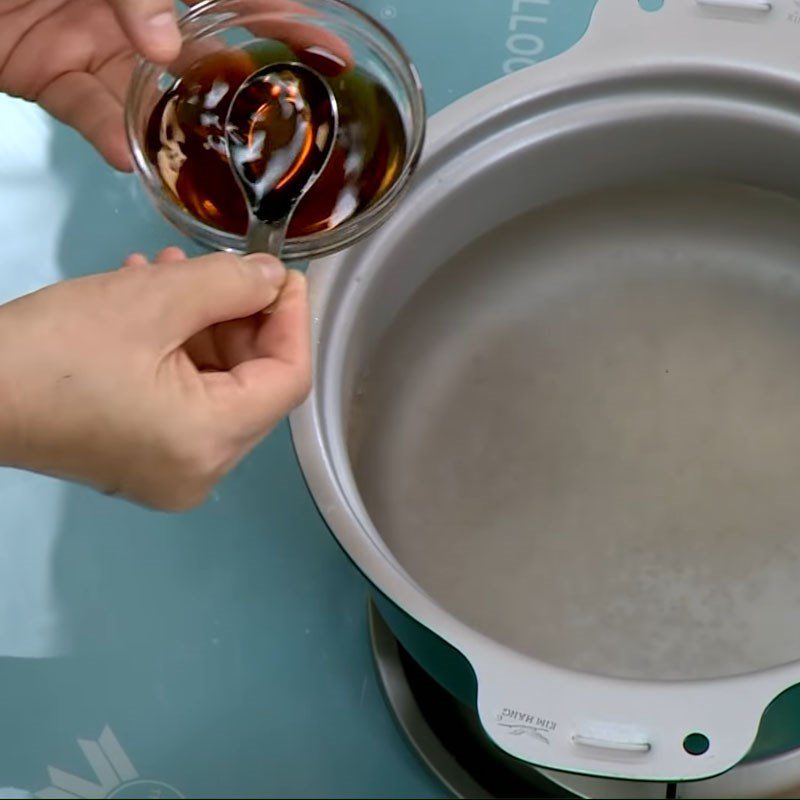
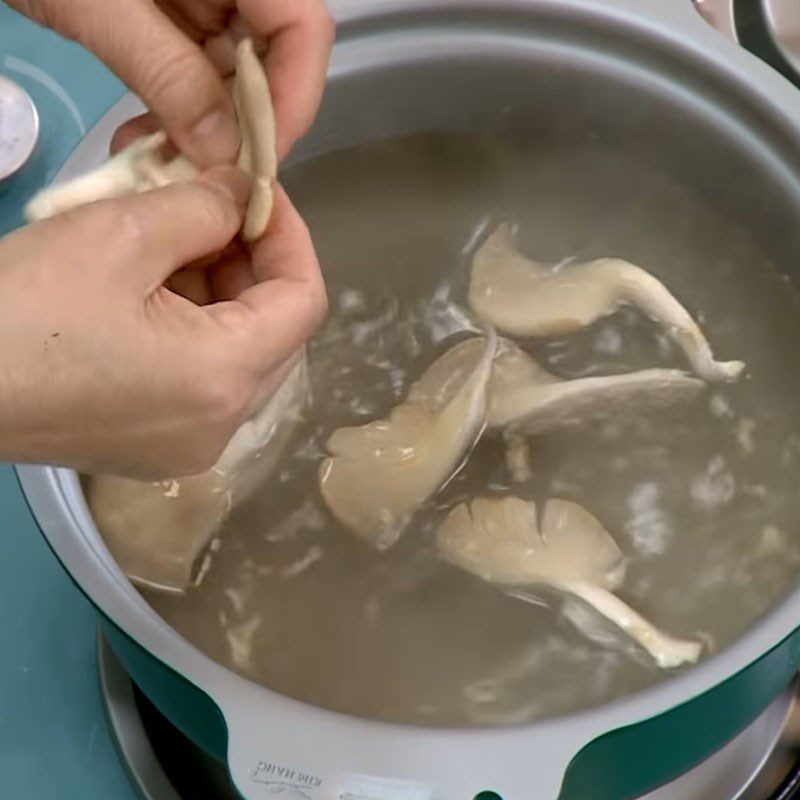
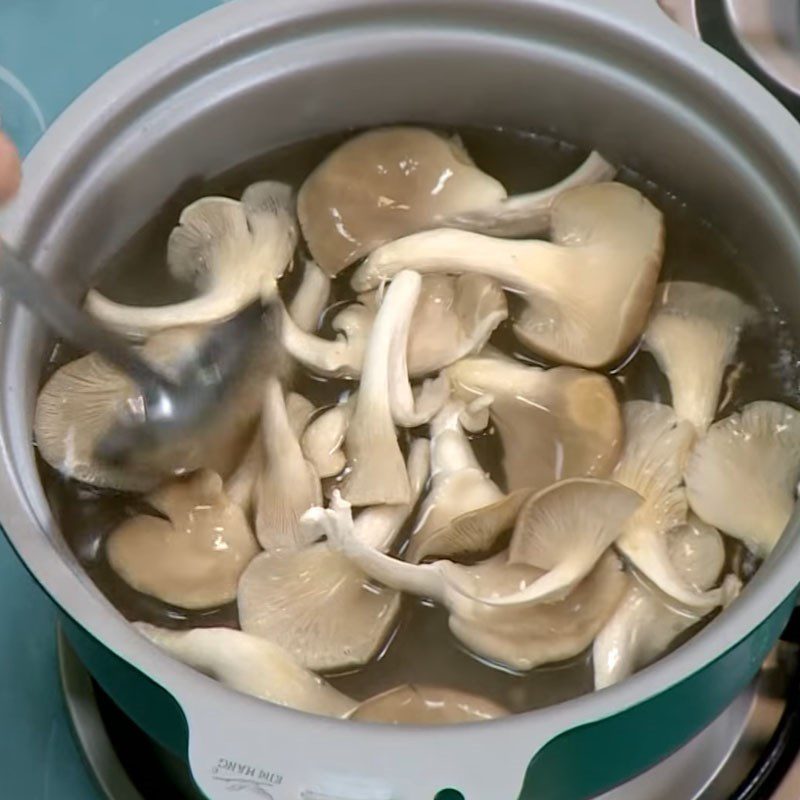
-
Cook the soup
When the mushrooms are cooked, add all the taro and smashed lemongrass, continue cooking until the water boils, then add the finely chopped Vietnamese coriander, stir well, and turn off the heat immediately.
Tip: Since the taro has been boiled beforehand, do not cook for too long, as it will make the taro mushy and the soup will not taste good.
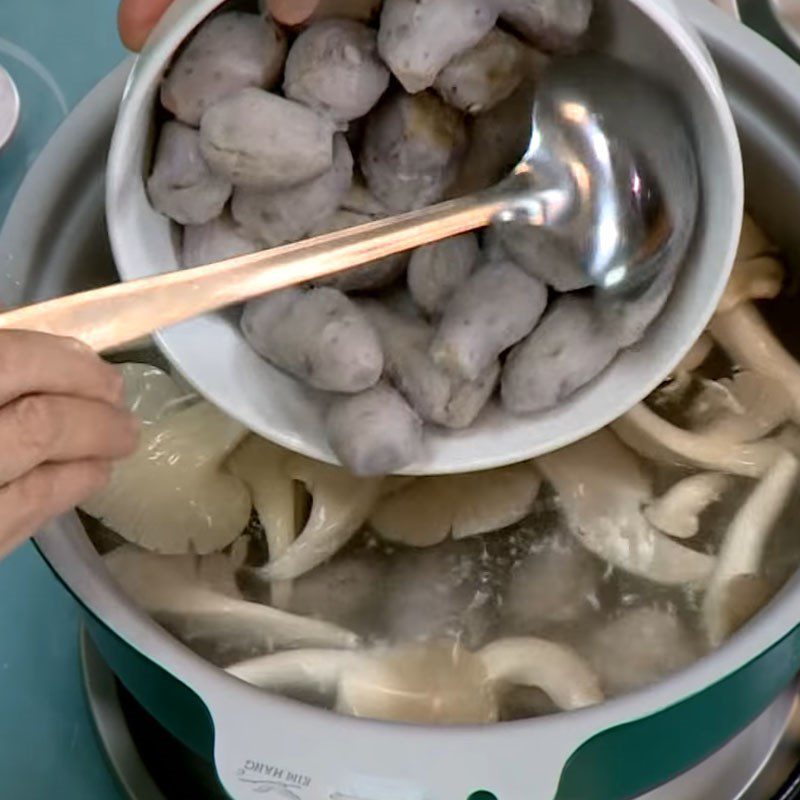
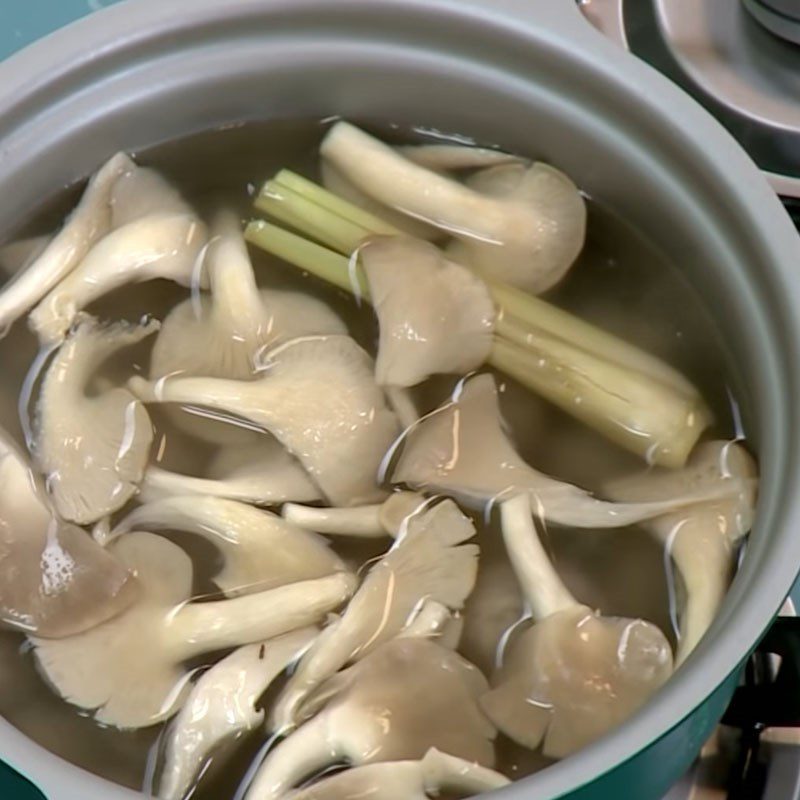
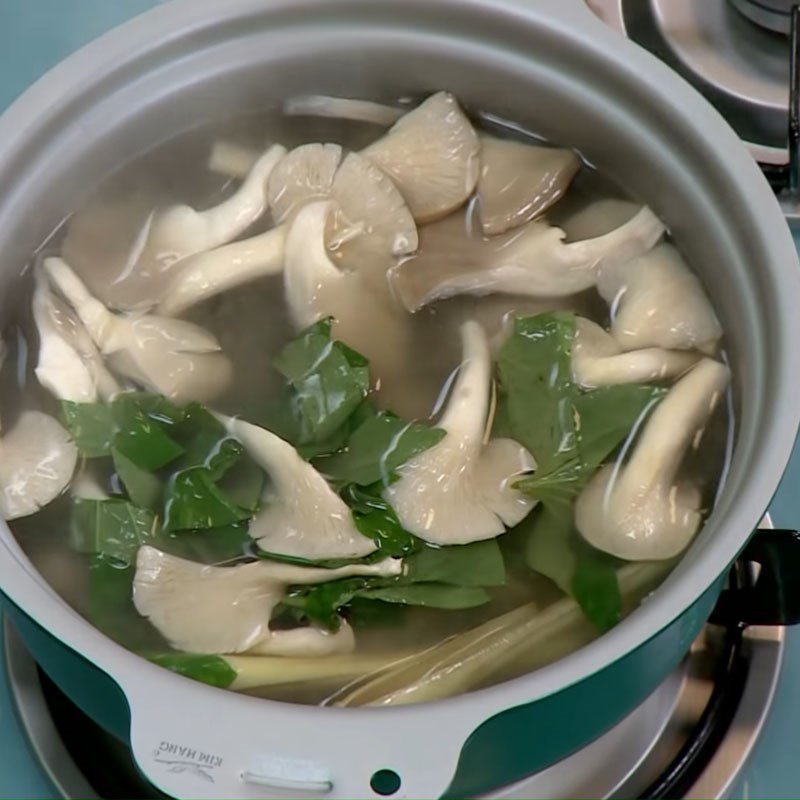
-
Final product
Scoop the soup into a bowl, sprinkle some ground pepper, and decorate it nicely to complete.
The taro and Vietnamese coriander soup, once finished, has an appealing color. The broth is light and sweet, flavorful with the aroma of Vietnamese coriander, with sweet and firm taro that is not mushy. This soup served hot with a bowl of rice is just perfect.
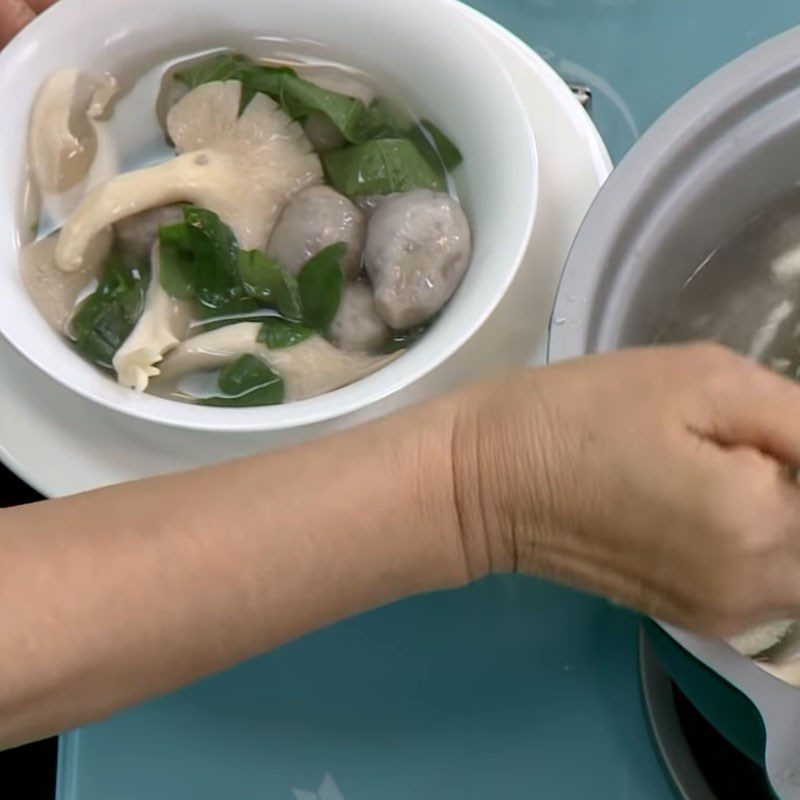
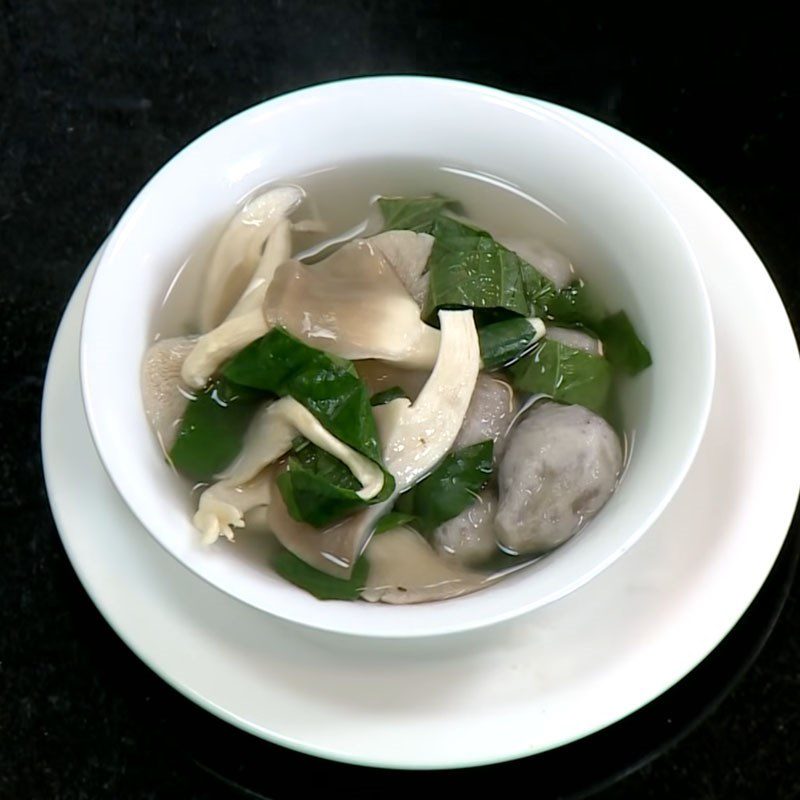
2. Taro and Vietnamese coriander soup with water
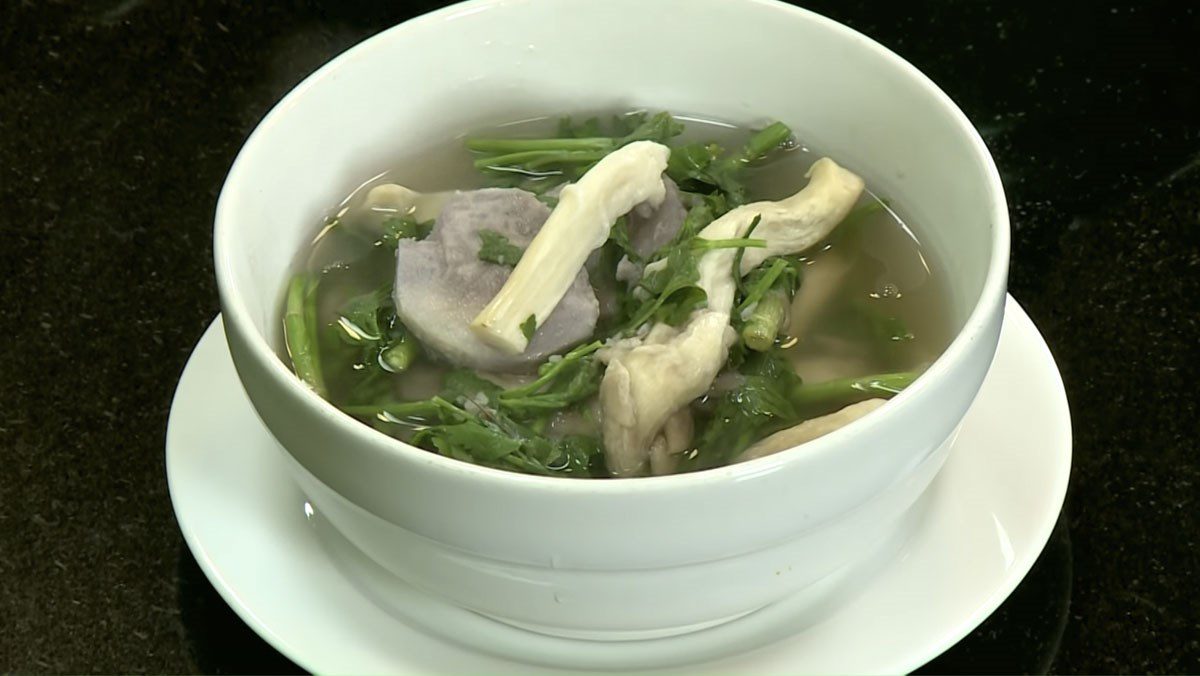
-
Preparation
40 minutes
-
Difficulty
Easy
Ingredients for Vegetarian Taro Soup with Water Celery Serves 4
Water celery 100 gr Oyster mushrooms 150 gr Taro 400 gr Vegetarian seasoning 1 teaspoon Sugar 1/2 tablespoon Fish sauce 2 teaspoons Salt a little
How to choose fresh water celery
- Fresh water celery should be bright light green and clean, with thick leaf stems, long segments, round stalks, and few root hairs.
- Avoid choosing water celery that is dark in color, uneven, old, tough, and has many roots, as it will not taste good when cooked.
- It is advisable to avoid water celery with unusually large, plump white stems, as this may indicate chemical treatment.
- It is best to go to the market early to select fresh and tender bunches of water celery.
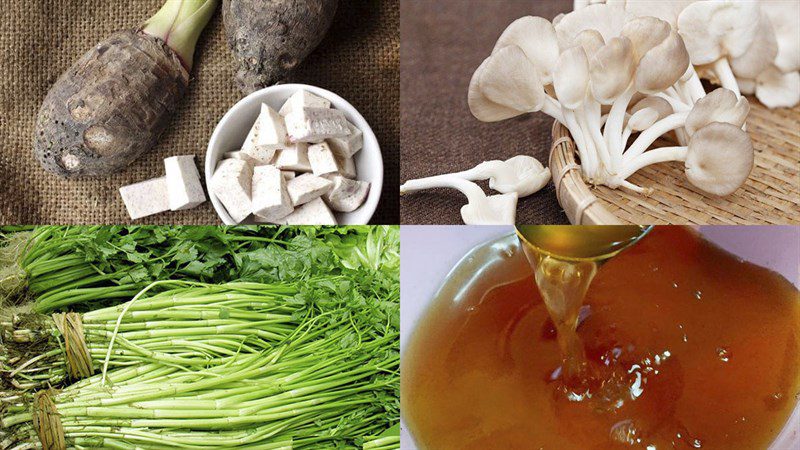
How to cook Vegetarian Taro Soup with Water Celery
-
Prepare the ingredients
To remove dirt, after purchasing, pick off any yellow leaves from the water celery (if any), then soak it in diluted salt water for about 15 minutes, rinse thoroughly with cold water, and let it drain.
Once the celery is drained, use both hands to squeeze, twist, and break the celery into bite-sized pieces about the length of your palm.
Tip: Squeezing, twisting, and breaking the celery helps release essential oils and enhances its aroma.
Oyster mushrooms bought should have their stems cut off, then washed thoroughly and drained before being torn in half.
Taro should be washed clean with water and then drained.
Bring a pot of water to a boil, add a little salt, then put the taro in the pot and boil for about 5 – 7 minutes, then remove it, let it cool, peel it, and cut it in half.
Tip: Only boil the taro until just cooked; do not overboil it, as it will become mushy when making soup.




-
Boil the oyster mushrooms
Place a pot on the stove, add 2 liters of filtered water and bring to a boil, then add the prepared oyster mushrooms. Add 1 teaspoon of vegetarian seasoning, 1/2 tablespoon of sugar, and 2 teaspoons of fish sauce. Proceed to cook over medium heat until the broth boils and the mushrooms release their sweetness.
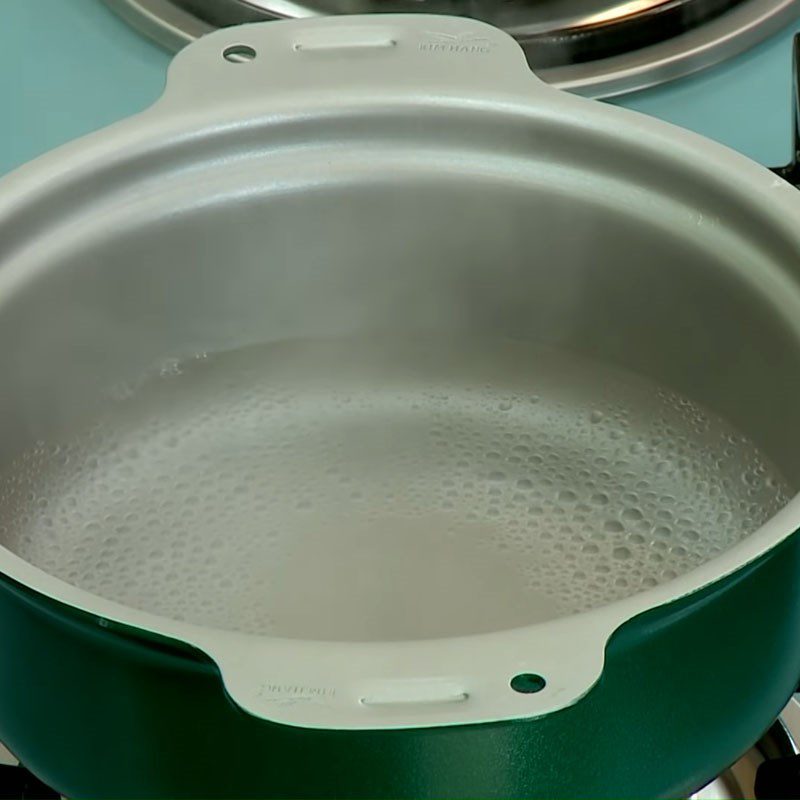


-
Cooking soup
When the mushrooms are cooked, add the taro and bring the broth back to a boil.
Next, add the water celery to the pot, using a spoon to stir evenly until the water boils again, then turn off the heat immediately.
Tip:
- It is advisable to boil the taro before cooking the soup to save cooking time, avoiding the mushrooms becoming too soft and unappetizing, and the soup will have the right thickness.
- Add the water celery at the last stage to help it retain its crispness and aroma, avoiding overcooking which will make it tough and lose its fragrance.

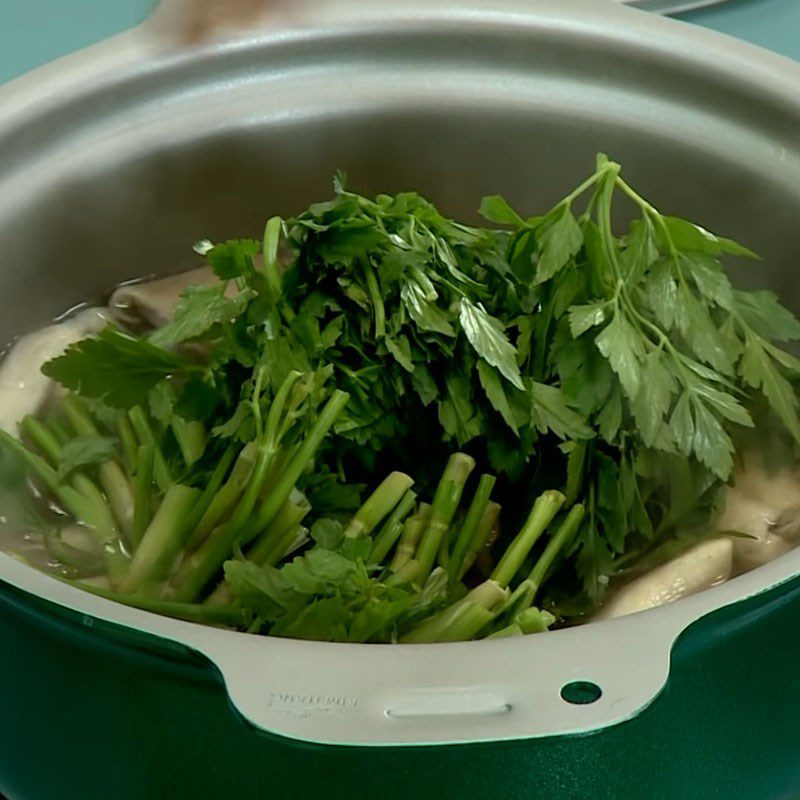
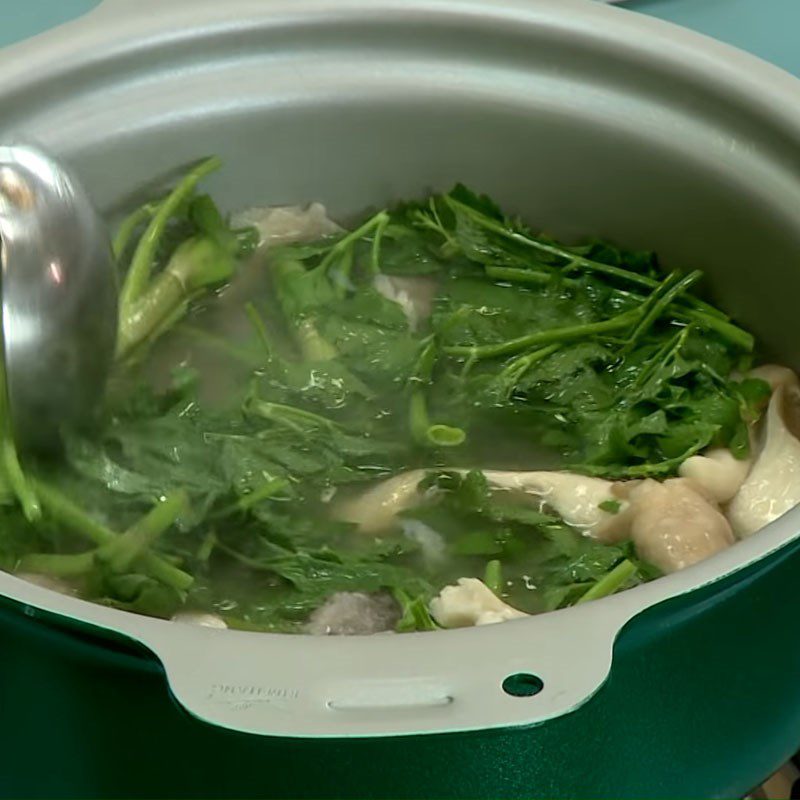
-
Final product
The soup has a sweet, mild flavor, with crispy water celery combined with the soft and flavorful taro, which is incredibly appetizing. This soup is simple, but when served with hot rice, it becomes very appealing.

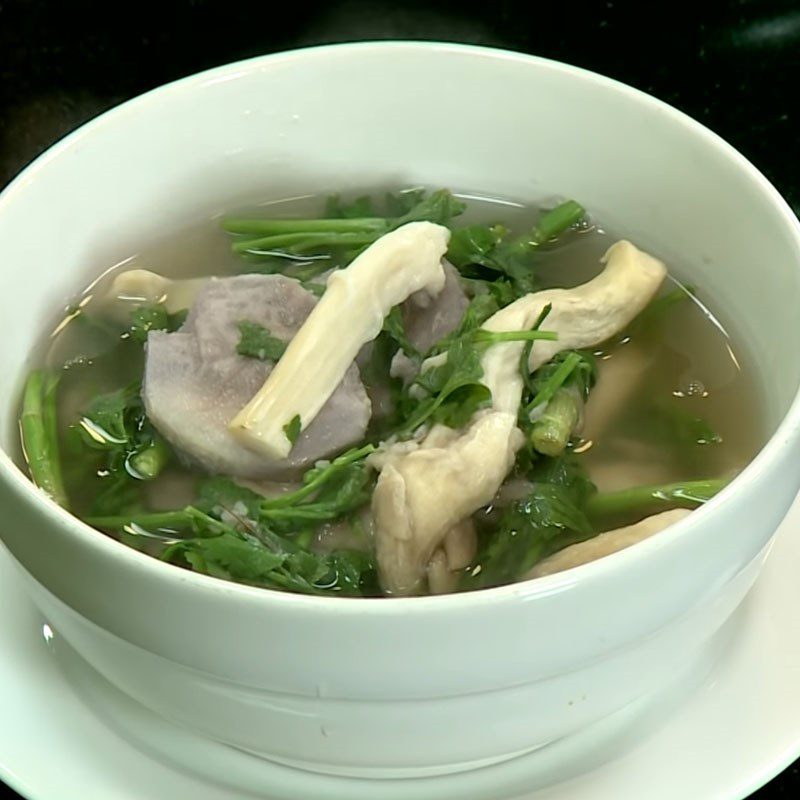

3. Taro soup with tofu
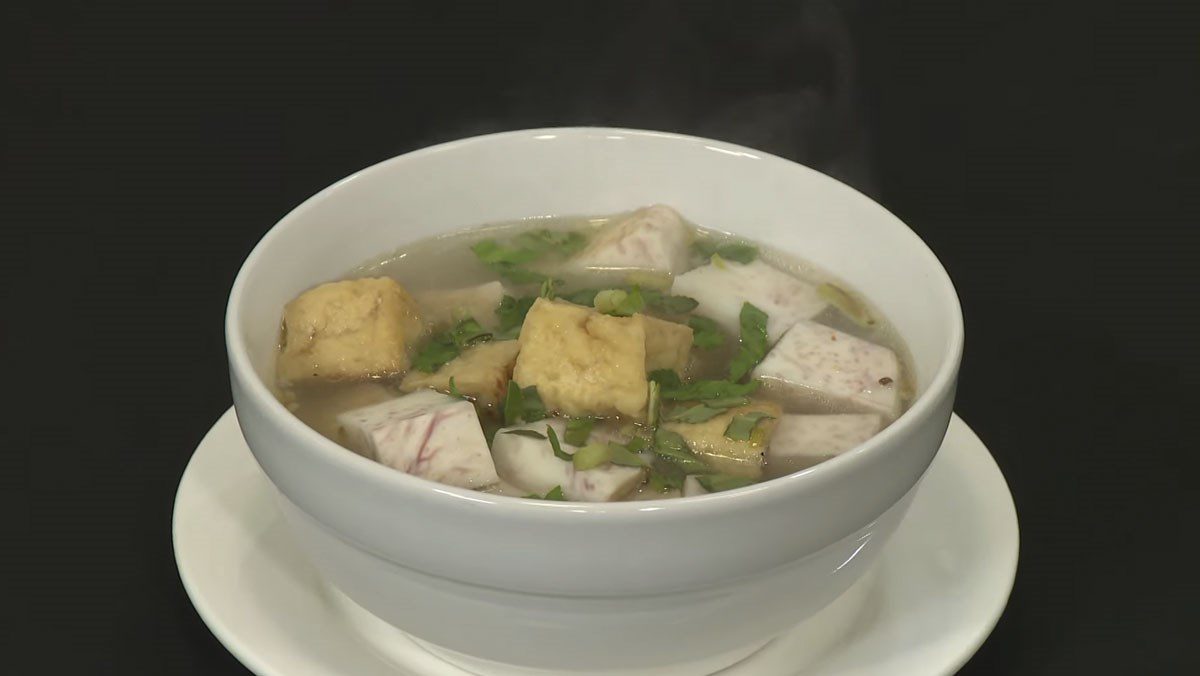
-
Preparation
40 minutes
-
Difficulty
Easy
Ingredients for Taro soup with tofu For 4 people
Taro 300 gr (1/2 large bulb) Tofu 200 gr Chopped scallions 2 tablespoons Cooking oil A little Vegetarian seasoning 2 tablespoons Vegetarian fish sauce 3 tablespoons Sugar 1/2 tablespoon Ground pepper A little Cilantro 2 sprigs Vietnamese coriander 1 sprig
How to choose good tofu without gypsum
- To choose good tofu that doesn’t contain gypsum, select pieces that are off-white, avoiding those that are yellow or golden.
- Choose pieces that are lightweight and smooth; these are good quality tofu.
- Fresh and pure tofu will have a characteristic aroma, while tofu containing gypsum will have a faint smell similar to lime.
- You should buy tofu at supermarkets or reputable grocery stores to ensure the best quality.
- Additionally, you can try making tofu right at home to ensure food safety.
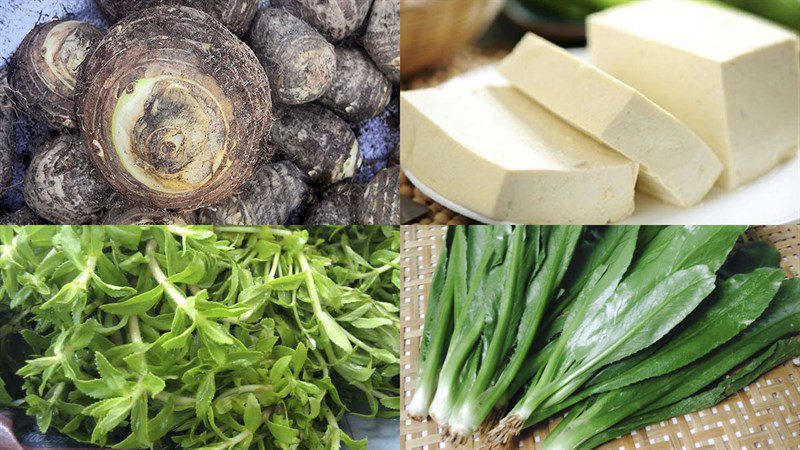
How to prepare Taro soup with tofu
-
Prepare the taro
To remove dirt, wash the taro thoroughly with water multiple times, then peel and cut it into square pieces about the size of a large finger.
Rinse the tofu with water, then cut it into square pieces the same size as the taro.
Wash the cilantro and Vietnamese coriander, then chop them finely.
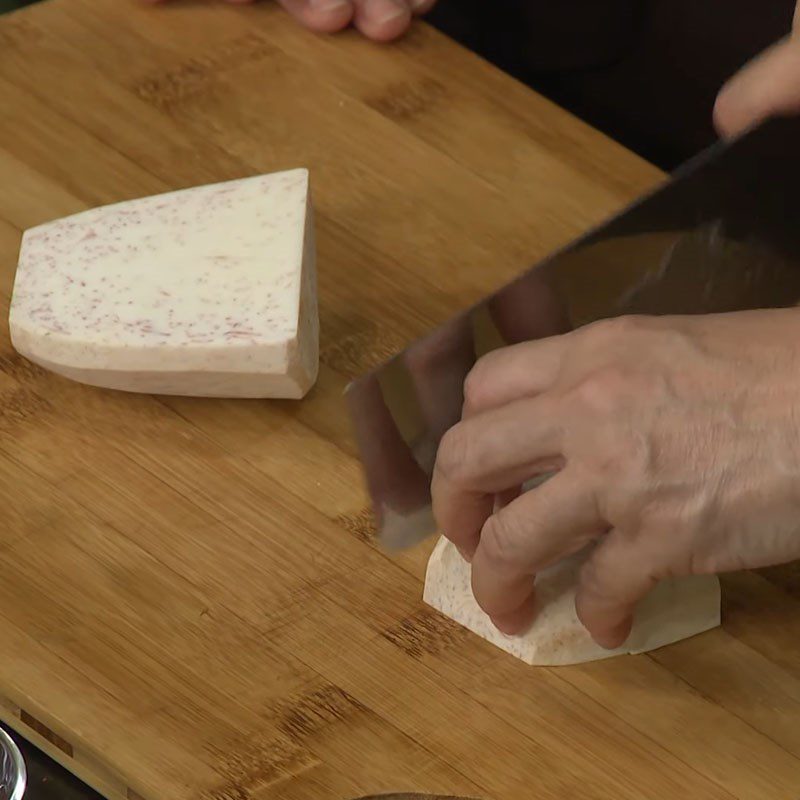
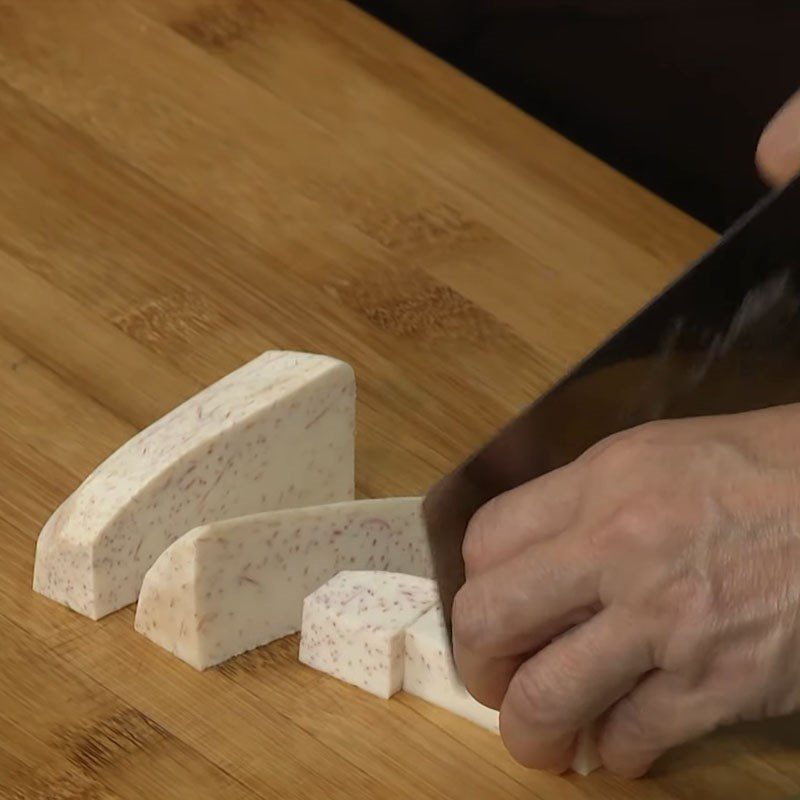
-
Fry the tofu
Heat a pan on the stove, add oil and wait for it to heat up, then add the tofu and fry on medium heat until the tofu is golden brown on both sides, then remove and drain the oil.
Tip:
- To have crispy golden tofu, make sure the oil is really hot before adding the tofu.
- Fry the tofu submerged in oil over medium heat to ensure even browning on all sides.
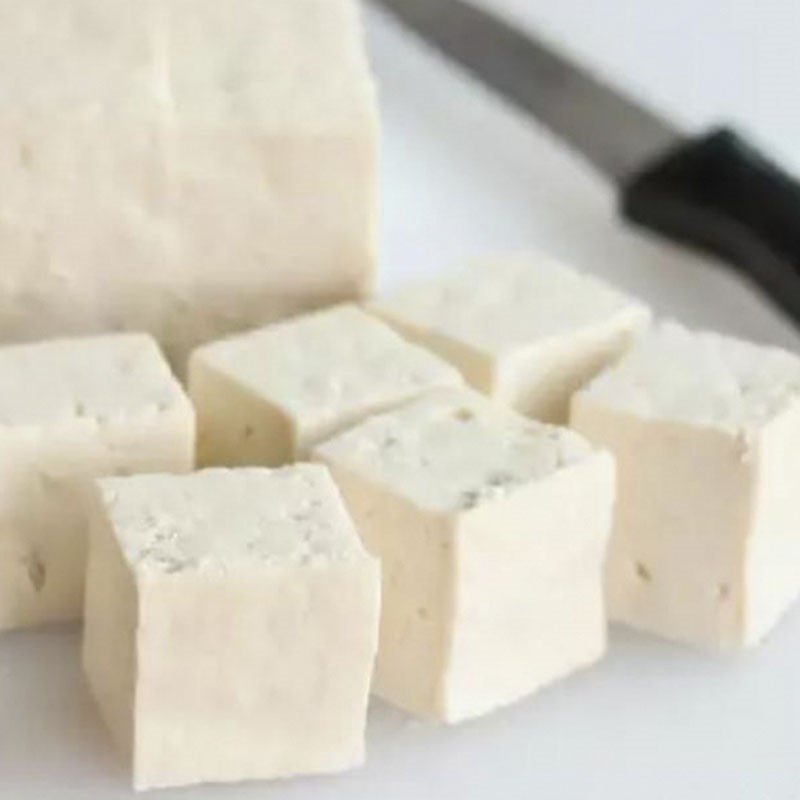
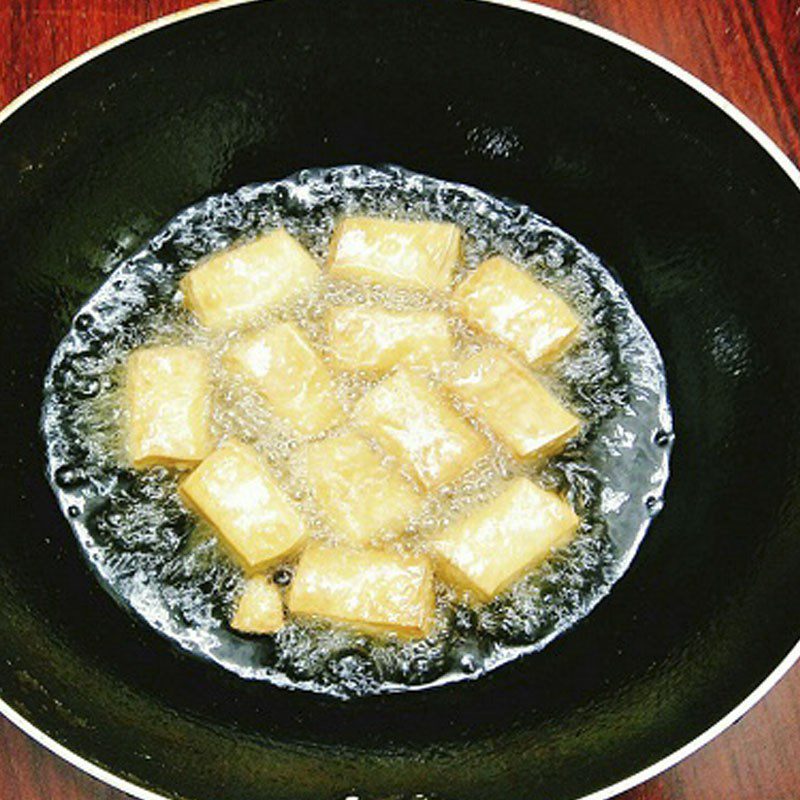
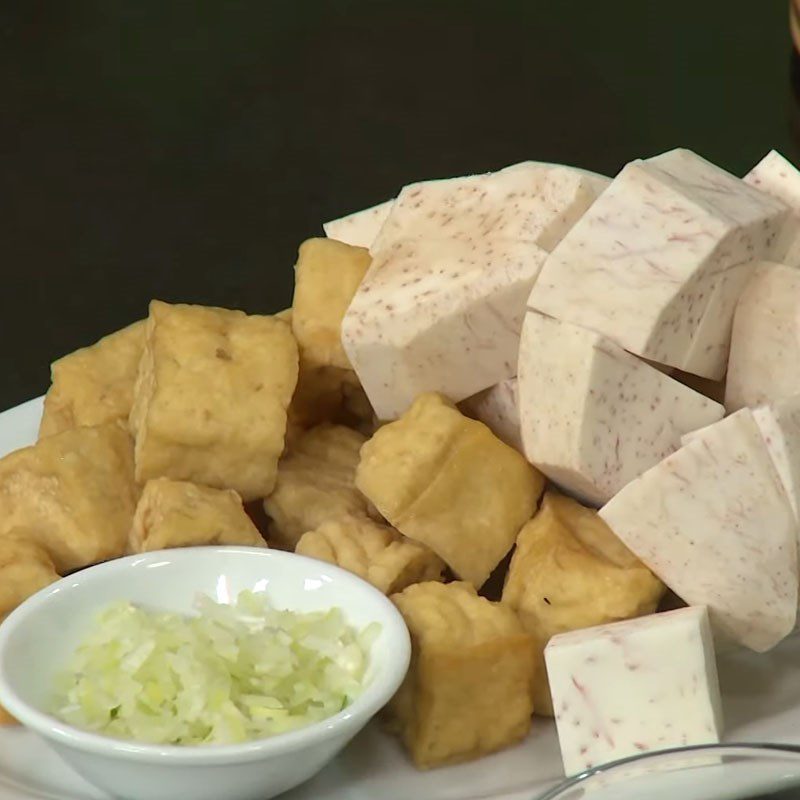
-
Stir-fried Tofu
Place another pan on the stove, add 1 tablespoon of cooking oil and heat it, then add the chopped green onions and sauté until fragrant.
When the onions become aromatic, add all the fried tofu to the pan. Next, add 1 tablespoon of vegetarian seasoning and 1 tablespoon of fish sauce to the pan. Stir well and fry for about 2 – 3 minutes for the tofu to absorb the seasoning.
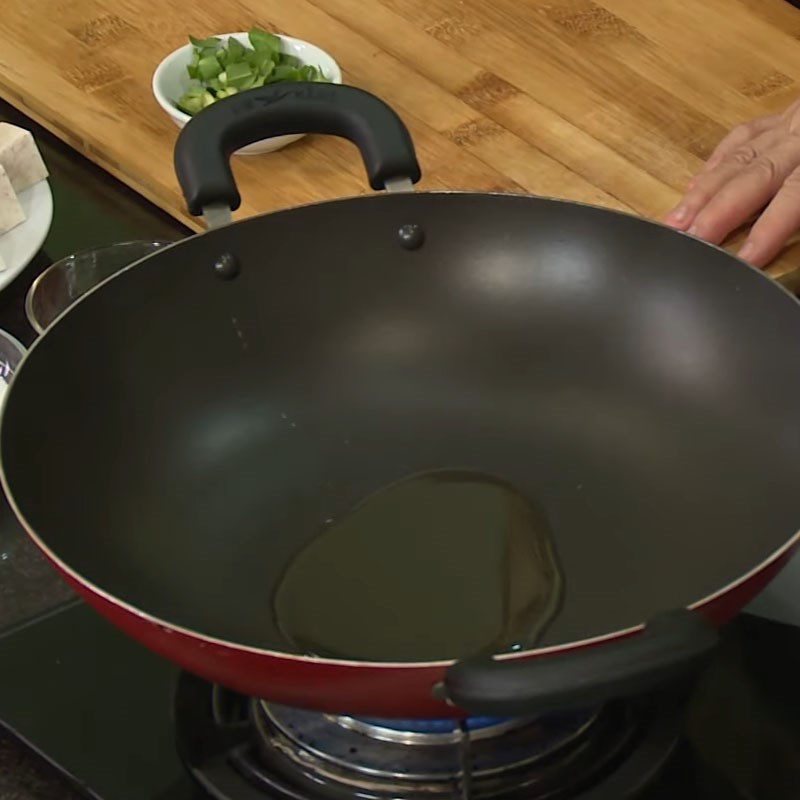
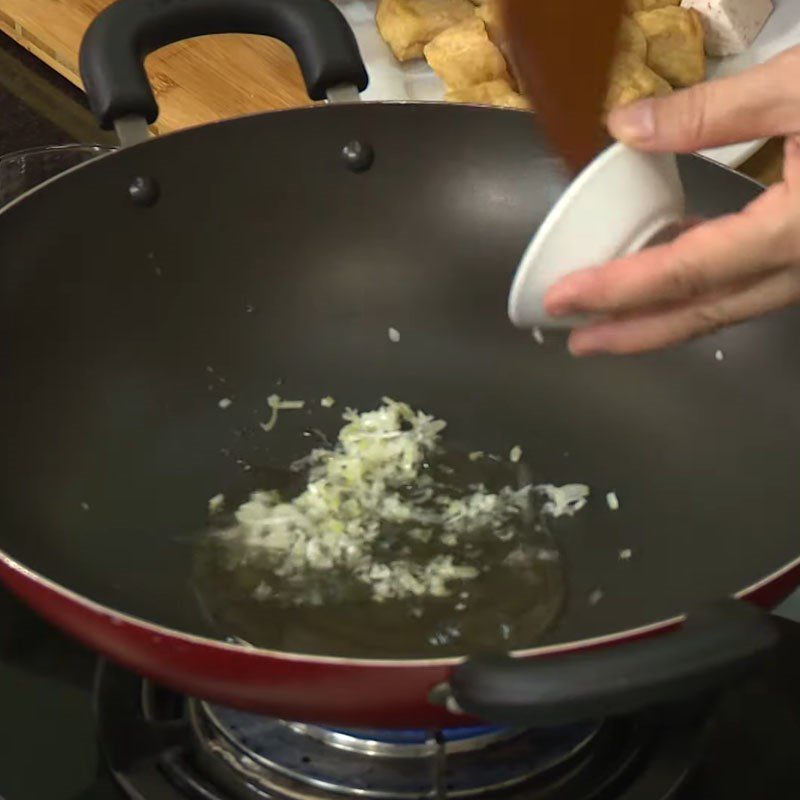
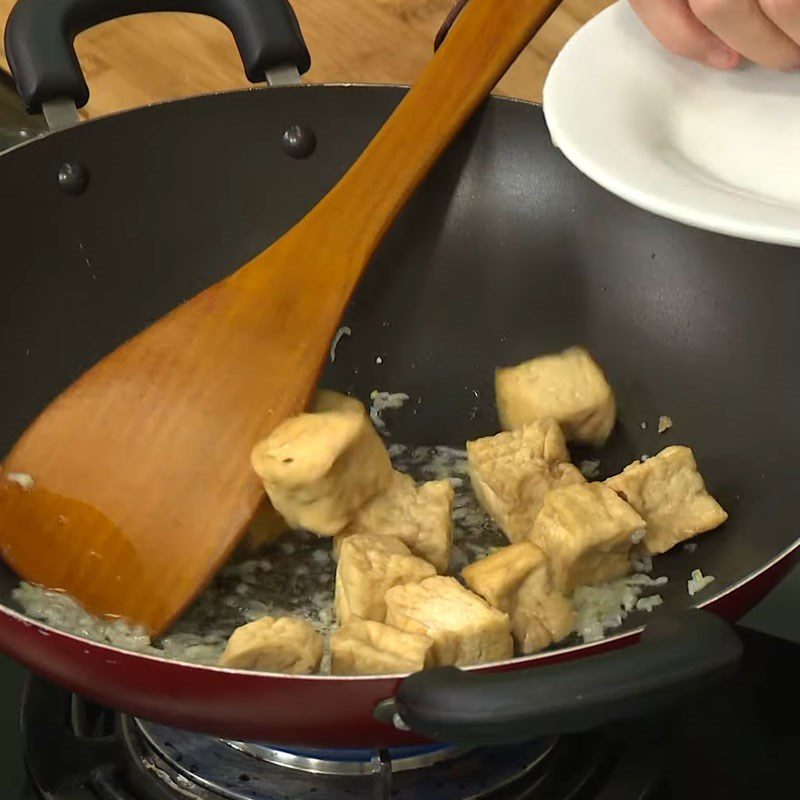
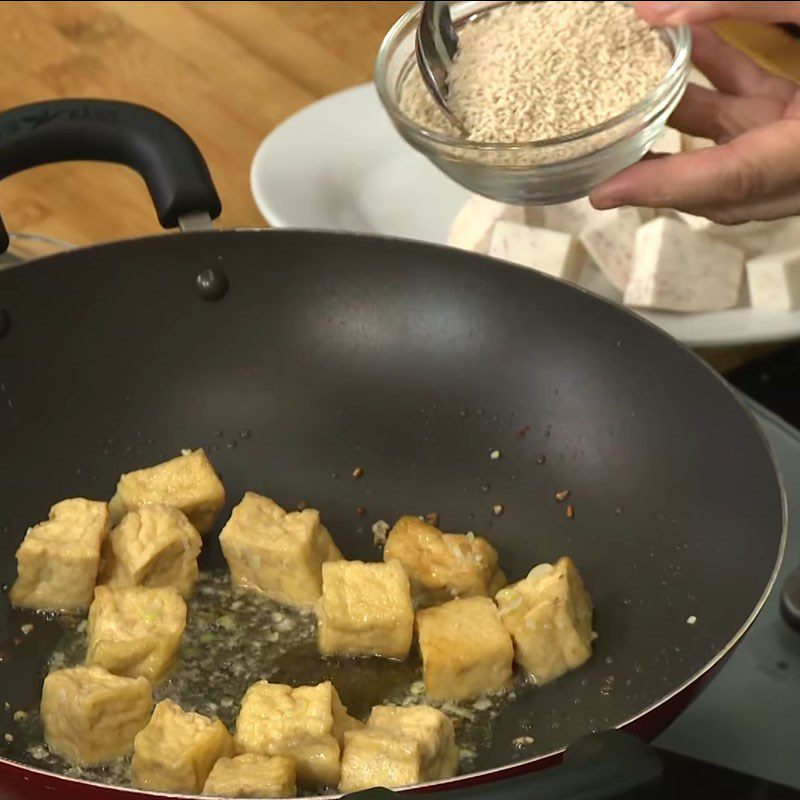
-
Cook the Soup
Place a pot on the stove, add about 2 liters of filtered water and bring to a boil. When the water starts to boil, add the stir-fried tofu and wait for the water to boil again.
Next, add the taro to the pot. Then add 1 tablespoon of vegetarian seasoning, 2 tablespoons of vegetarian fish sauce, and 1/2 tablespoon of sugar, then stir well. Cook over medium heat for about 15 – 20 minutes until the taro is soft, then turn off the heat.
Scoop the soup into a bowl, sprinkle a little ground pepper, chopped coriander, and Vietnamese cilantro, then garnish it nicely to finish.
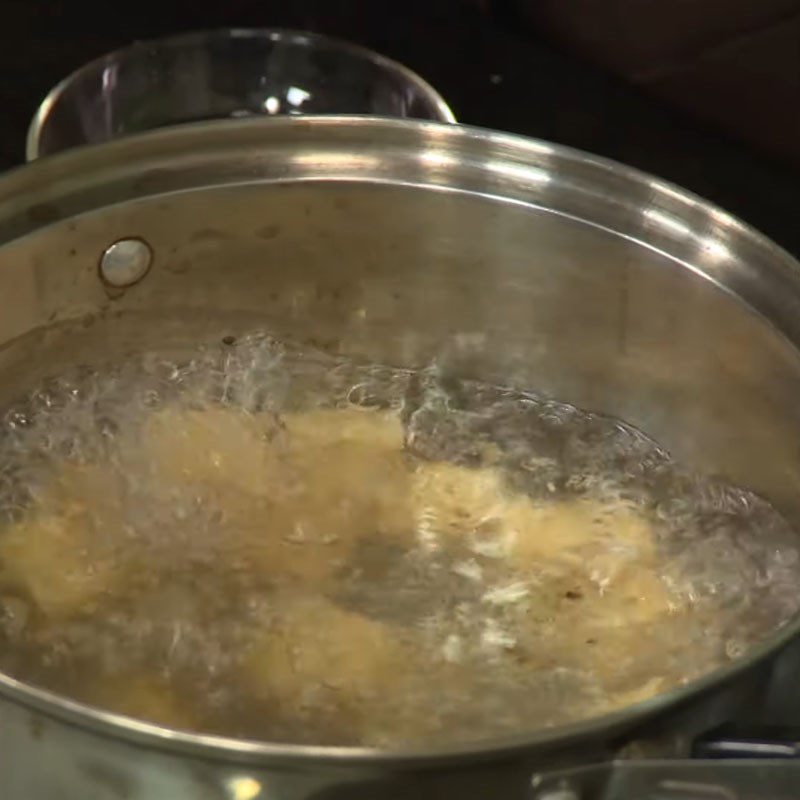
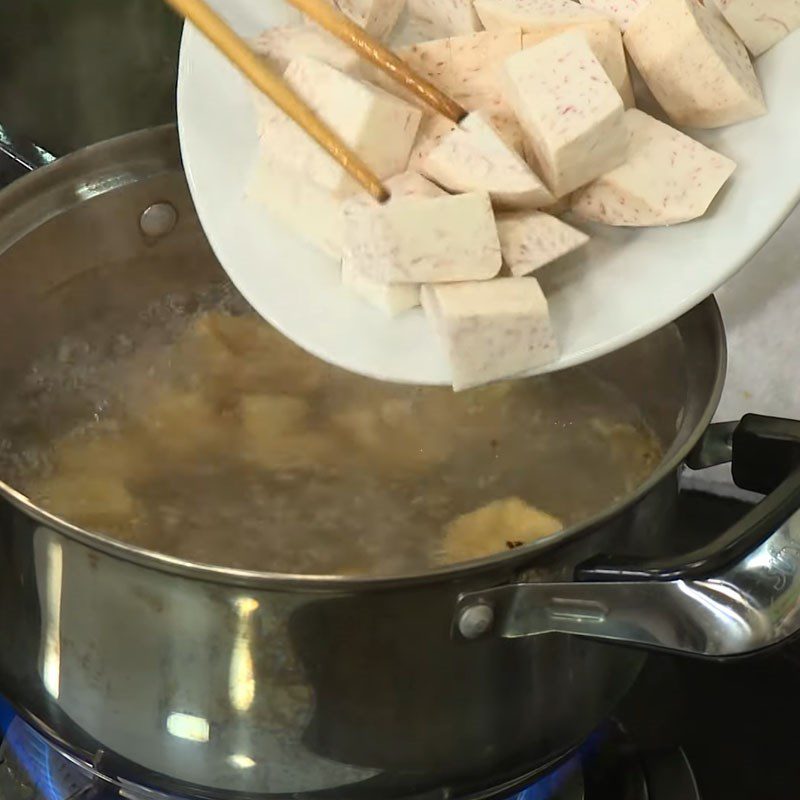
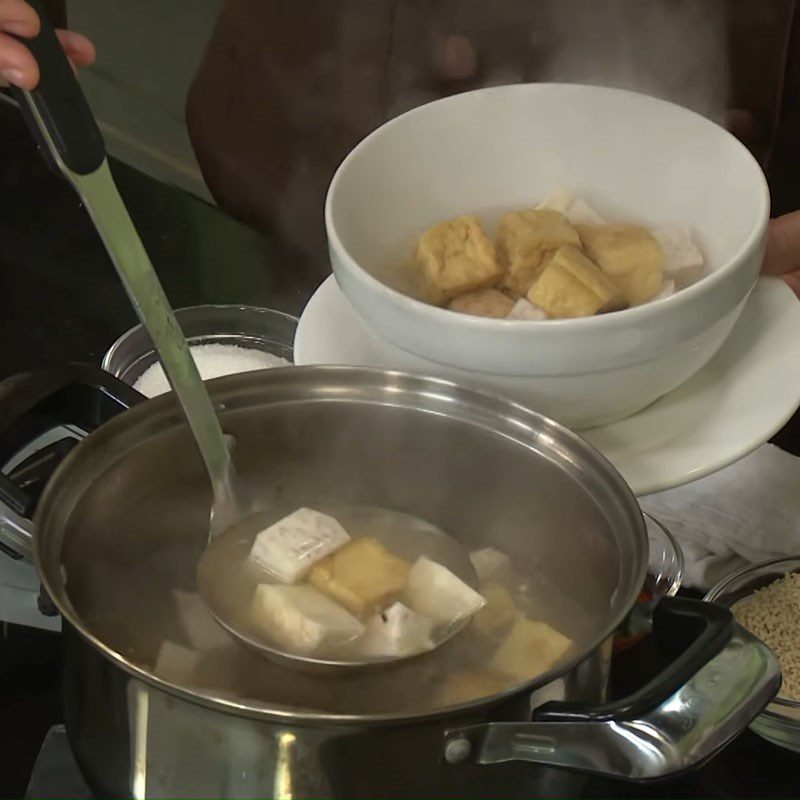
-
Final Product
With just a few simple steps, you already have a hot, delicious, and attractive taro soup with tofu. What are you waiting for? Quickly get into the kitchen and make this soup to treat your whole family right away!
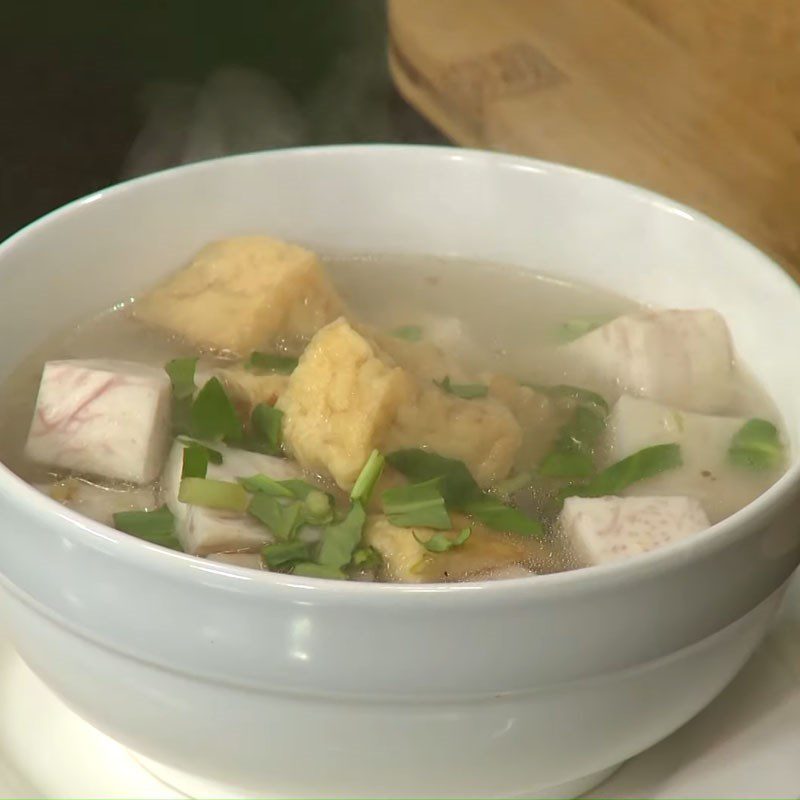
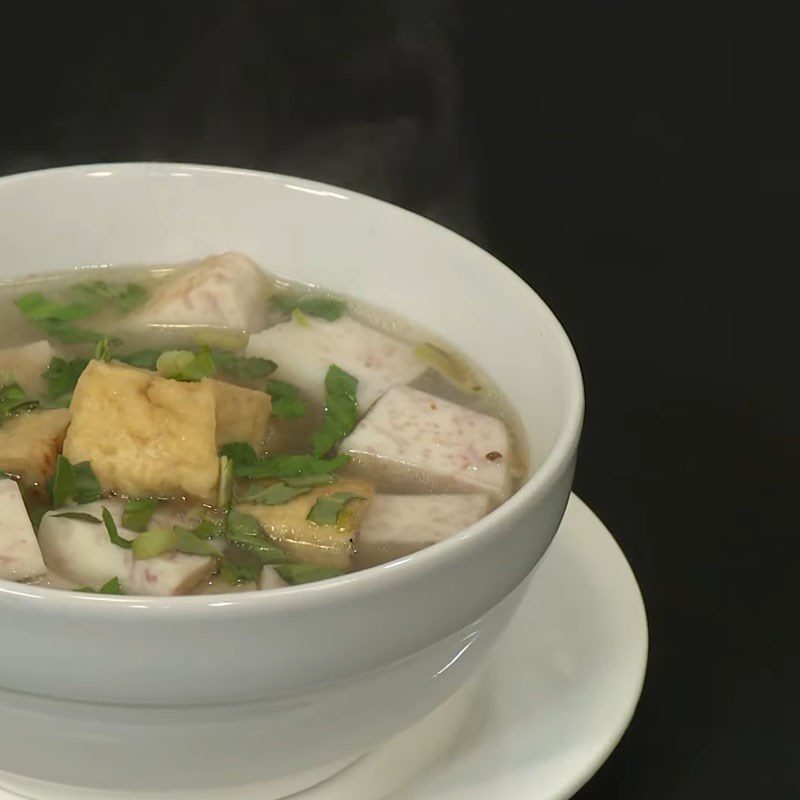
Tips for Successful Execution
- It is advisable to boil the taro before cooking to shorten the cooking time and reduce the itchiness of the taro.
- Avoid cooking the taro for too long as it will make the taro mushy and unappetizing.
- During the cooking process, regularly skim off the foam to keep the broth clear and visually appealing.
How to Choose Good and Sticky Taro
- Choose taro of medium size, not too large or too small, as it will be stickier, more fragrant, and sweeter when eaten.
- Taro bulbs with a cloudy white interior and many purple streaks are delicious and starchy.
How to prepare taro without getting itchy
- You should leave the layer of soil on the taro skin and use dry hands to peel it. After that, soak the taro in diluted salt water for 10 minutes before cooking.
- Note that during the soaking process, you should not put your hands directly into the taro.
- Wear gloves to peel the skin.
- If you happen to get itchy from peeling the taro, you can hold your hand over the fire, soak your hand in saltwater mixed with lemon juice, or crush green banana leaves and apply them to the itchy area for about 10 minutes to relieve the itch!
How to choose delicious oyster mushrooms
- You should choose mushrooms with long, thick, and firm stems; these will be sweeter than mushrooms with small stems.
- Mushrooms that have been harvested for a long time and stored at low temperatures often have blackened tips.
- You should touch the mushrooms with your hand; if they feel slimy, you should not buy them.
- If using packaged products, pay attention to the expiration date and ensure the packaging is intact.
See details: How to choose delicious oyster mushrooms for cooking
See more:
With 3 ways to cook taro soup vegetarian recently, you will have a wonderful meal for your family. Wishing you success!
*Refer to images and recipes from the YouTube channel Diệu Pháp Âm
